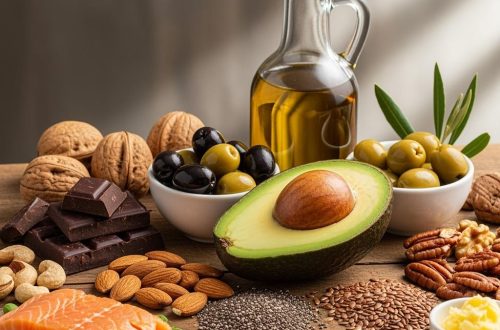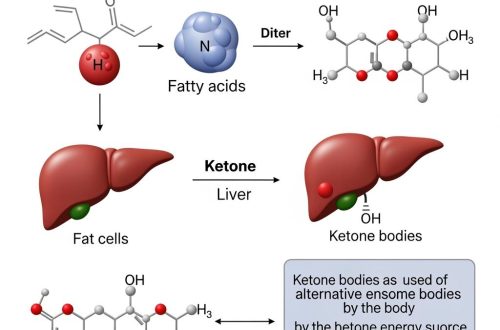Effective Meal Planning Approaches
The ketogenic diet has revolutionized how millions approach weight loss and metabolic health, but success hinges on one crucial element: strategic meal planning. Without proper planning, the high-fat, low-carb lifestyle can quickly become overwhelming, expensive, or nutritionally inadequate. Whether you’re a complete beginner or struggling to maintain consistency, these proven meal planning approaches will transform your keto journey from chaotic to systematic.
Understanding the Keto Framework
Before diving into specific meal plans, it’s essential to understand what makes a meal truly ketogenic. The standard ketogenic diet requires approximately 70-75% of calories from fat, 20-25% from protein, and just 5-10% from carbohydrates. For most people, this translates to staying under 20-25 grams of net carbs daily while consuming adequate protein and filling the remainder with healthy fats.
This macronutrient distribution forces your body into ketosis, a metabolic state where fat becomes the primary fuel source instead of glucose. However, achieving and maintaining ketosis requires precision, which is where strategic meal planning becomes invaluable.
The Foundation Approach: Building Your Keto Template
The most sustainable meal planning strategy starts with creating a flexible template rather than rigid meal schedules. This foundation approach centers on identifying reliable protein sources, healthy fats, and ultra-low-carb vegetables that you genuinely enjoy eating.
For proteins, focus on fatty cuts of meat like ribeye steak, salmon, chicken thighs with skin, and eggs. These provide both protein and fat, simplifying your macro calculations. Ground beef with 80/20 fat content, sardines, and full-fat dairy products like cheese and Greek yogurt also serve as excellent foundation foods.
Your fat sources should include both cooking fats and finishing fats. Avocado oil, coconut oil, and grass-fed butter work well for cooking, while olive oil, nuts, seeds, and avocados can be added to finished dishes. Having these staples consistently available eliminates daily decision-making stress.
Vegetables should primarily come from above-ground, leafy varieties. Spinach, kale, arugula, broccoli, cauliflower, zucchini, and bell peppers provide essential nutrients while keeping carb counts minimal. These can be prepared in bulk and used throughout the week in various combinations.
The Batch Cooking Strategy
Perhaps the most effective approach for busy individuals involves batch cooking key components on weekends. This method involves preparing large quantities of proteins, vegetables, and fat-rich sauces that can be mixed and matched throughout the week.
Start by cooking several pounds of different proteins using various methods. Slow-cook a whole chicken, grill multiple steaks, bake salmon fillets, and hard-boil a dozen eggs. Store these in portion-controlled containers, and you’ll have ready-to-eat proteins for five to seven days.
Simultaneously, prepare large batches of roasted vegetables. Cauliflower, broccoli, Brussels sprouts, and asparagus can all be roasted with olive oil and seasonings, then stored for quick reheating. Consider making cauliflower rice, zucchini noodles, or spaghetti squash strands as carbohydrate substitutes.
Don’t forget to prepare fat-rich sauces and dressings that can transform simple ingredients into satisfying meals. Avocado-based dressings, herb butter, hollandaise sauce, and pesto made with extra olive oil can dramatically improve meal variety and satisfaction.
The Intermittent Fasting Integration Method
Many successful keto practitioners combine their low-carb approach with intermittent fasting, typically following a 16:8 schedule where eating occurs within an eight-hour window. This approach can simplify meal planning by reducing the number of daily meals while potentially enhancing ketosis.
When planning for intermittent fasting, focus on creating two substantial, nutrient-dense meals rather than three smaller ones. Your first meal should include adequate protein to maintain muscle mass and enough fat to provide sustained energy. The second meal can be larger and more indulgent, incorporating your favorite keto-friendly foods.
This approach works particularly well for people who struggle with constant meal preparation or find themselves naturally less hungry on keto. Breaking your fast with a meal rich in healthy fats often provides remarkable satiety, making it easier to reach your next eating window without cravings.
The Budget-Conscious Approach
Contrary to popular belief, keto doesn’t have to break the bank. Budget-friendly meal planning focuses on affordable, nutrient-dense staples that provide maximum value per dollar spent.
Eggs represent perhaps the most cost-effective keto food, providing high-quality protein and fat at minimal cost. They can be prepared countless ways and combined with inexpensive vegetables like frozen spinach or canned sardines for complete, satisfying meals.
Chicken thighs cost significantly less than breasts while providing more fat, making them ideal for keto budgets. Ground beef, especially when purchased in bulk and frozen in meal-sized portions, offers versatility and value. Canned fish like salmon, sardines, and mackerel provide omega-3 fatty acids at a fraction of fresh fish costs.
For vegetables, frozen options often cost less than fresh while providing equal nutritional value. Frozen broccoli, spinach, and cauliflower can form the foundation of countless meals. Buying seasonal vegetables when they’re abundant and freezing them yourself can provide even greater savings.
The Meal Prep Container System
Organization becomes crucial for keto success, and the container system approach provides structure and convenience. Invest in quality glass containers in various sizes, then prepare complete meals that can be grabbed and heated throughout the week.
Design your containers with proper macro ratios in mind. Each container should include a palm-sized portion of protein, a generous serving of low-carb vegetables, and adequate healthy fats. This might look like grilled chicken thigh over cauliflower rice with avocado and olive oil, or salmon with roasted broccoli and herb butter.
Prepare different flavor profiles to prevent boredom. Mediterranean containers might include olives, feta cheese, and herb-roasted vegetables, while Mexican-inspired versions could feature cilantro-lime cauliflower rice, avocado, and cheese. Asian-influenced meals might incorporate sesame oil, low-carb vegetables, and ginger-seasoned proteins.
Troubleshooting Common Planning Pitfalls
Even well-intentioned meal planning can go awry without addressing common challenges. Many beginners underestimate their fat needs, leading to constant hunger and eventual abandonment of the diet. Ensure each meal contains substantial healthy fats, not just trace amounts.
Another frequent mistake involves insufficient electrolyte planning. Keto’s diuretic effect requires increased sodium, potassium, and magnesium intake. Plan for bone broth, salted nuts, avocados, and leafy greens to prevent the infamous “keto flu.”
Variety fatigue represents another significant challenge. Combat this by maintaining a rotation of different cuisines and cooking methods. Italian-inspired zucchini lasagna, Indian curries with cauliflower rice, and Mexican lettuce wraps can all fit perfectly within keto parameters while providing exciting variety.
Making It Sustainable
The most effective keto meal planning approach ultimately depends on your lifestyle, preferences, and goals. Start with whichever method resonates most strongly, then adapt and modify based on your experiences. Remember that perfection isn’t required – consistency and sustainability matter more than flawless execution.
Success in keto meal planning comes from preparation, flexibility, and patience with the learning process. By implementing these systematic approaches, you’ll transform the ketogenic diet from a daily struggle into an effortless lifestyle that supports your health and weight management goals for years to come.






